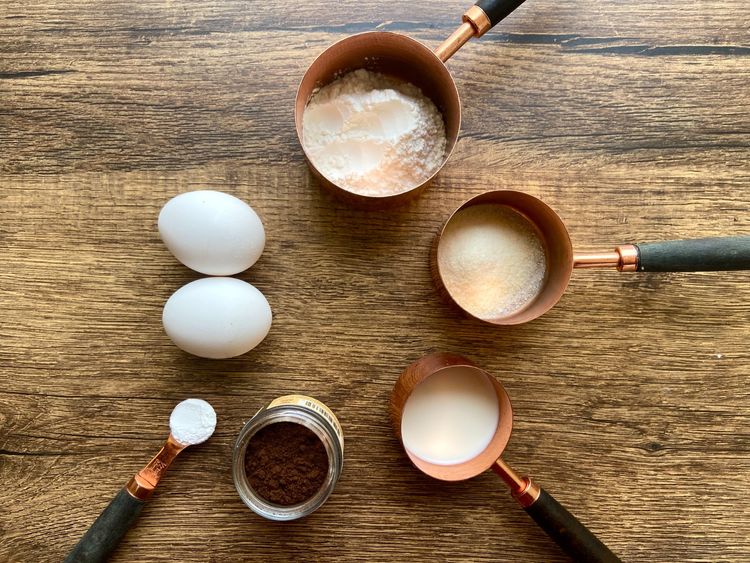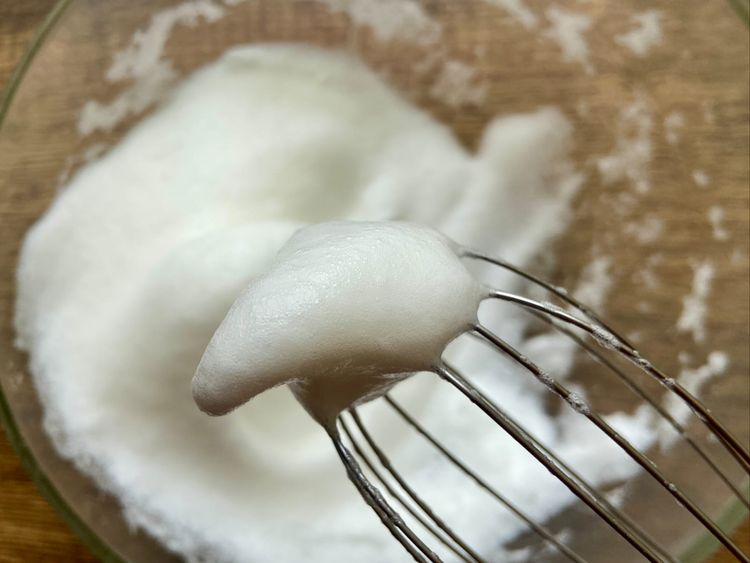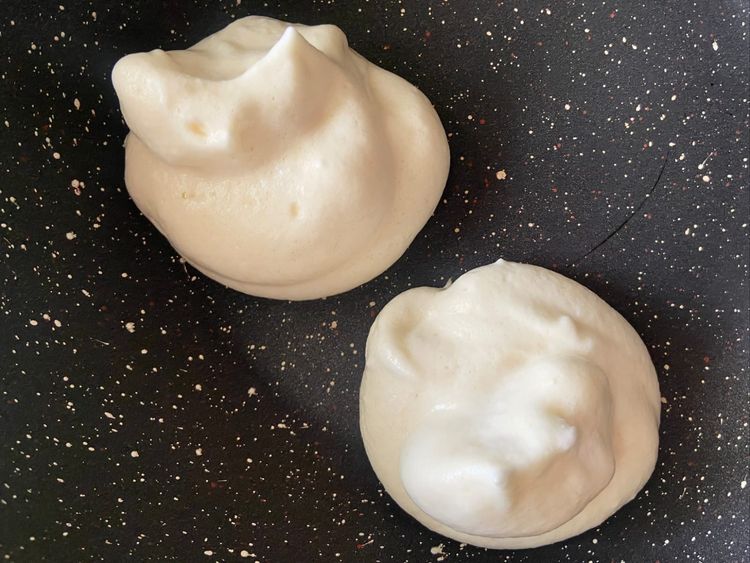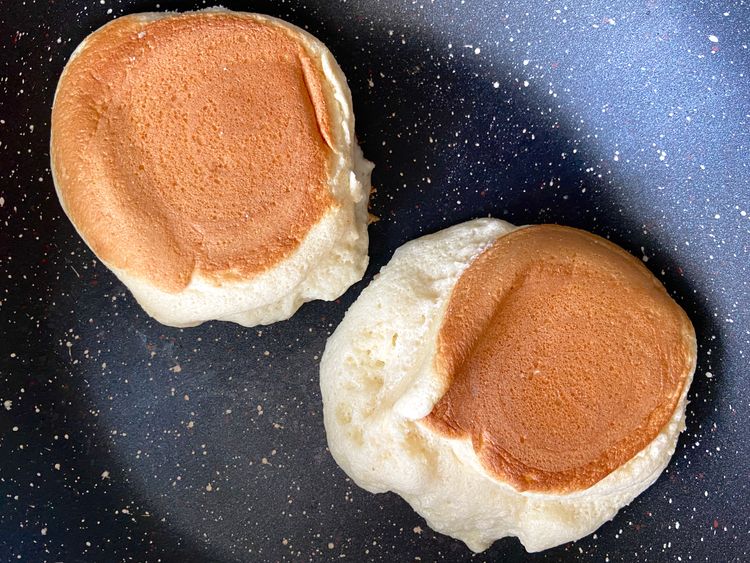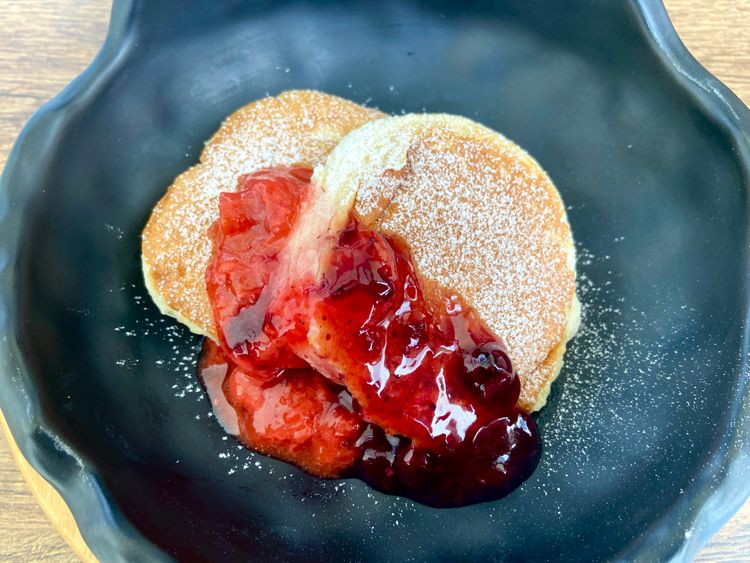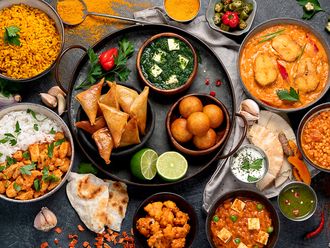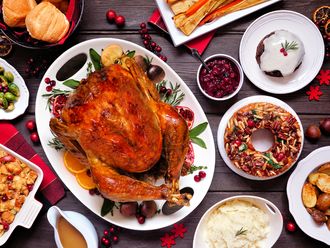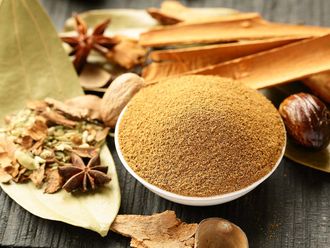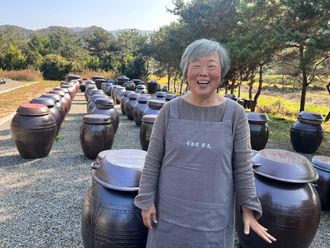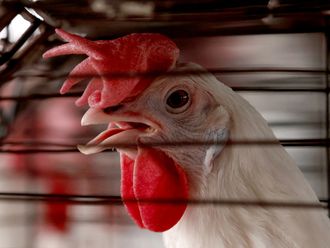Elevate your breakfast game with Japanese soufflé pancakes that are all the rage right now and for all the right reasons! Their origin is unclear but it is said that some chefs invented these when they were trying to create a softer and lighter version of regular pancakes. These soufflé style pancakes have become very popular in recent years in Japan and now worldwide!
As the name suggests, these pancakes are a mix of American-style pancakes and dessert soufflés. These are made with techniques very similar to how a soufflé is made. A soufflé is made by incorporating whipped egg white meringue into its batter which makes it extremely soft and delicate. Japanese pancakes too, are made similarly, giving them a cloud-like texture. The process is a little tedious but definitely worth the effort.
Japanese pancake recipe
The recipe for Japanese pancakes is quite different from your regular pancakes. Regular pancakes have a straightforward batter-mixing. Meanwhile, the prep for the batter of their Japanese counterpart requires some technical knowledge.
Step-by-step recipe guide
Preparation time - 30 minutes
Cooking time - 10 to 12 minutes
Servings - 2 to 3
Ingredients
2 whole eggs
10 gms fresh cream
15 gms full-fat milk
20 gms sugar
1/4 tsp vanilla powder
30 gms all-purpose flour
1/2 tsp baking powder
1/2 tsp vegetable oil (for greasing)
Water, as required (for steaming)
Strawberry and blueberry sauce for serving (optional)
Icing sugar for dusting (optional)
Method
First, take the eggs and separate the yolks from the whites. Place the yolks in a clean bowl and keep the whites aside for later. Next, add milk, cream, 15 grams of sugar, and vanilla powder to the bowl with the yolks. Mix everything until well combined and aerated. Then, whisk in the flour and baking powder to the mixture. Set it aside.
Take the egg whites and whisk them in a stand mixer or a hand blender until they become frothy and white. At this point, add the remaining sugar and whisk again at high speed until the egg whites form soft peaks. Be careful not to over-whip.
Now, add one-third of the whites to the yolk mixture and mix it lightly with a whisk or a spatula. Then, add the remaining whites to the yolk mix and combine everything. Make sure to mix it with a light hand.
Set a non-stick pan on low heat and add half a teaspoon of oil. Wipe off the excess with a clean tissue or cloth. Make individual pancakes by placing one scoop of the batter on the pan. After a minute, repeat the process by placing one more scoop on each pancake formed.
Add a little water around the pancakes, cover it with a proper lid, and let it cook in the steam for about a minute. Remove the lid and place the last scoop on each pancake mound. Sprinkle more water and cover it again to cook for two to three minutes.
Using a spatula, slide the pancake and swiftly turn it upside down, add some more water and cover it again. Let it cook on the other side for about five minutes over a low flame. Once cooked, remove it from the pan and serve immediately with some fruit compote and a dusting of icing sugar.
Tips
1. Use clean bowls when making meringue to ensure its success. If necessary, wipe the bowl with a clean cloth and some vinegar.
2. Make sure to separate the egg yolks and whites properly. The whites should not have any part of the yolks; otherwise, they will not form a meringue.
3. Whip the meringue properly. Do not over or under-whip it; the pancakes may not rise properly. You will know the meringue is perfect when it can form stiff peaks with a tip that folds over.
4. Use a slightly deep-bottomed griddle or pan for cooking.
5. Pile the batter slowly, layering it vertically. Do not spread it like regular pancakes.
6. Cook the pancakes slowly at the lowest heat setting, covered.
7. They may have a brown colour on top but may still be uncooked inside. So, cook them properly, or they will deflate quickly.
8. They will taste best when served immediately after cooking.
9. You can serve them with toppings of your choice, like maple syrup, honey or whipped cream.
What other recipes would you like featured? Tell us at food@gulfnews.com



